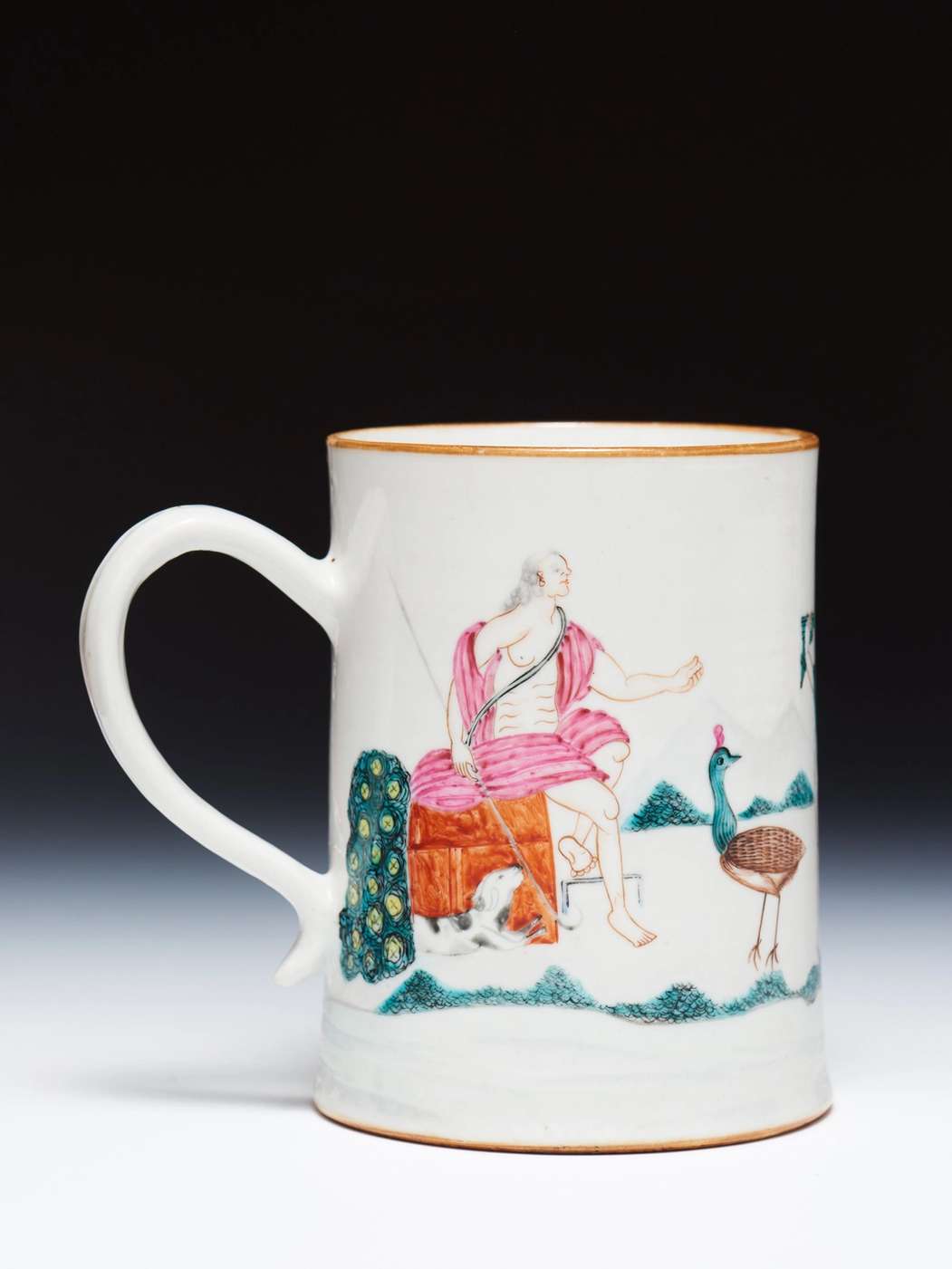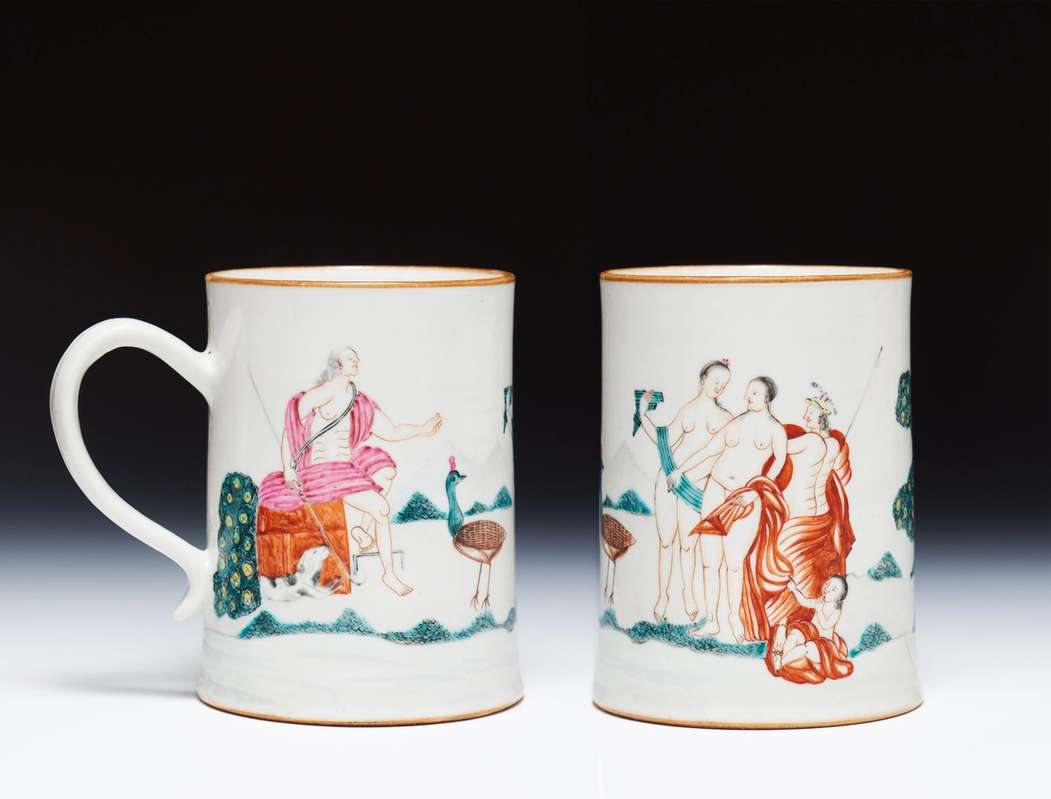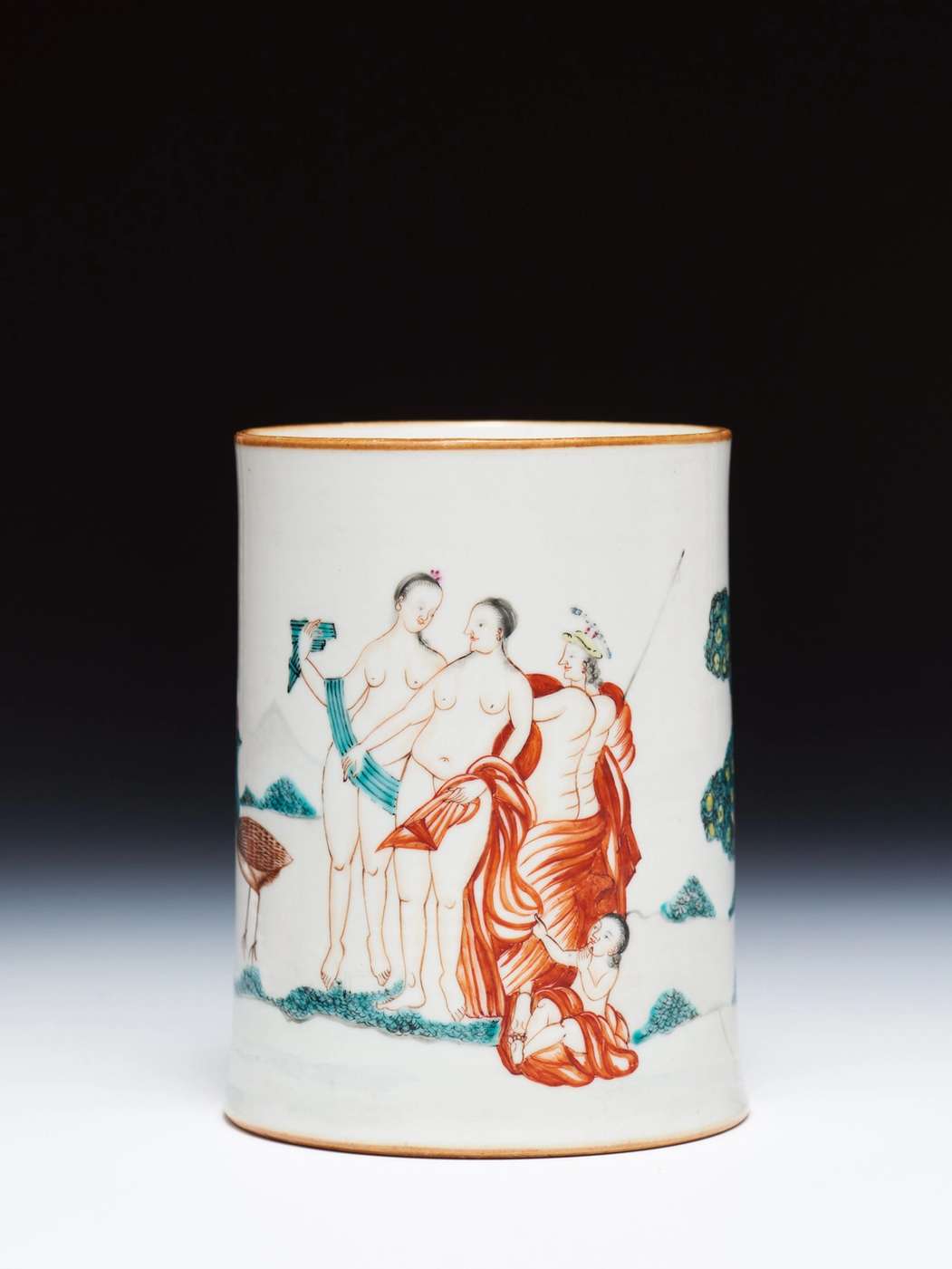Click the above image to zoom
Chinese porcelain tankard decorated in famille rose enamels with the pattern Judgement of Paris, Qianlong.
Sold
Stock Number: 4918
Large Chinese export porcelain tankard decorated in opaque enamels from the famille rose (fencai) palette with the pattern Judgement of Paris, c. 1770, Qianlong reign, Qing dynasty, h. 15 cm, 6 in; d. 10,5 cm, 4¼ in. 6-16104
Illustrated: Chinese Ceramics & Works of Art, by A. Varela Santos, 018/2019, cat. 70.
◆ The Judgement of Paris is a story from the Greek mythology that was very popular from the 6th century BC when it was used to decorate pottery vases and later in Rome. This story enjoyed a revival in Europe’s Renaissance being used as an excuse to paint naked figures.
Sandro Botticelli (1485-1488) painted this pattern but with clothed figures and Peter Paul Rubens has a large oil at the National Gallery in London, dated c. 1636.
As the story goes Eris, the goddess of discord, was not invited by Zeus to the banquet to celebrate the marriage of Peleus with Thetis, parents of Achilles, to avoid problems due to her character. Angered by the snub she crashes into the celebrations and offered a golden apple from the garden of Hesperides as a prize for the most beautiful woman present.
The goddesses Hera, Athena and Aphrodite claimed the prize asking Zeus to choose one of them. Unwilling to favor any claim he delegated the task to the mortal Paris, known for his fairness of judgment. Escorted by Hermes the candidates bathed in the spring of Ida and were taken to the presence of Paris on mount Ida. Unable to decide the three beauties stripped naked and tried to bribe him. Hera offered him the kingdom of Europe and Asia; Athena wisdom and skill in war; Aphrodite the most beautiful woman of the world who, at the time, was Helen of Sparta, wife of king Menelaus.
Paris accepted the gift and awarded the golden apple to Aphrodite.
The Greeks’ expedition to retrieve Helen from Troy is the mythological basis for the Trojan war.
中國外銷瓷粉彩“帕里斯的評判”圖大啤酒杯,約1770年,清乾隆,高15釐米,6英吋; 直徑10.5釐米,4¼英吋。
圖示:《中國陶瓷及工藝精品》,作者阿.瓦瑞拉.山度士,編號70。
◆ “帕里斯的評判”出自希臘神話,在公元前6世紀,這個故事非常受歡迎,人們用它的場景來裝飾陶瓷瓶子,后來在羅馬也出現相同情況。在歐洲文藝復興期間,這個故事被人們當成用來畫裸體的藉口,又再次受到廣大歡迎。
Sandro Botticelli (1485-1488)也畫過這種紋飾,但裡面的人物都穿著衣服。倫敦國家博物館里藏Peter Paul Rubbens在1636年畫的相似題材的大油畫。
故事中宙斯因為害怕厄里斯(不和女神)性格的缺陷導致麻煩,并沒有邀請她參加阿基里斯父母佩琉斯和忒提絲的婚禮。
因為受到不公平的對待,厄里斯憤怒地闖進婚禮現場,並且拿出采自赫斯帕里得斯圣園的一個金蘋果,作為當晚給現場最美麗女士的獎品。
女神赫拉,雅典娜和阿佛羅狄忒都認為自己才是實至名歸,於是叫宙斯從她們三位中選一位勝利者。
可惜宙斯並不想得罪任何一方,所以把任務交給了帕里斯,因其從來都是一位公正的人。
在赫爾墨斯的陪同下,三位女神在艾達泉中沐浴完畢,來到艾達山上帕里斯的面前。但帕里斯未能決定勝負,於是三位女神脫去了衣裳並且開始賄賂他。赫拉承諾給他歐亞王國,雅典娜答應給他戰爭中需要的智慧和技能,阿佛羅狄忒許諾給他世界上最美的女人,當時墨奈勞斯國王的妻子海倫。
帕里斯接受了阿佛羅狄忒的賄賂並且把金蘋果給了她。
希臘人為了把海倫從特洛伊身邊搶回來而遠征,這成了特洛伊戰爭的神話故事背景。



